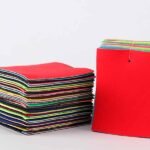Neoprene is everywhere—gym bags, lunch totes, laptop sleeves, shapewear, sports braces, bottle coolers, wetsuits, and even fashion handbags. It’s stylish, functional, cushiony, and protective. Yet whenever people search online about neoprene, one question keeps coming back: is neoprene breathable? The discussion is surprisingly nuanced, because neoprene behaves differently depending on whether you’re using closed-cell neoprene, perforated neoprene, mesh neoprene, or ultra-thin sports neoprene. And consumers often confuse “breathability,” “ventilation,” “thermal insulation,” and “moisture control” as if they’re the same thing.
Before diving into all the misconceptions, let’s start with a clear, simple answer:
Neoprene fabric is generally not breathable because it is made from a closed-cell foam structure that blocks air from passing through. Standard neoprene traps heat and moisture rather than allowing ventilation like cotton or polyester. However, specialized versions—such as perforated neoprene, mesh neoprene, or thinner neoprene blends—can offer improved airflow and comfort depending on their construction and application.
Many buyers assume neoprene should “breathe” because it feels soft and flexible like a textile. Others expect it to behave like athletic mesh. Some imagine it works like foam sneakers. When real-world use doesn’t match those expectations—whether it’s a hot laptop sleeve, a sweaty brace, a warm backpack, or a wetsuit that feels snug—users start to ask the exact question you’re here for.
To help you understand neoprene breathability without the marketing confusion, let’s walk through a clear, detailed, and practical guide based on 18+ years of neoprene manufacturing experience at neoprene-bag.com, backed by customer case studies and real usage data.
What Is Neoprene Fabric and How Is It Made?
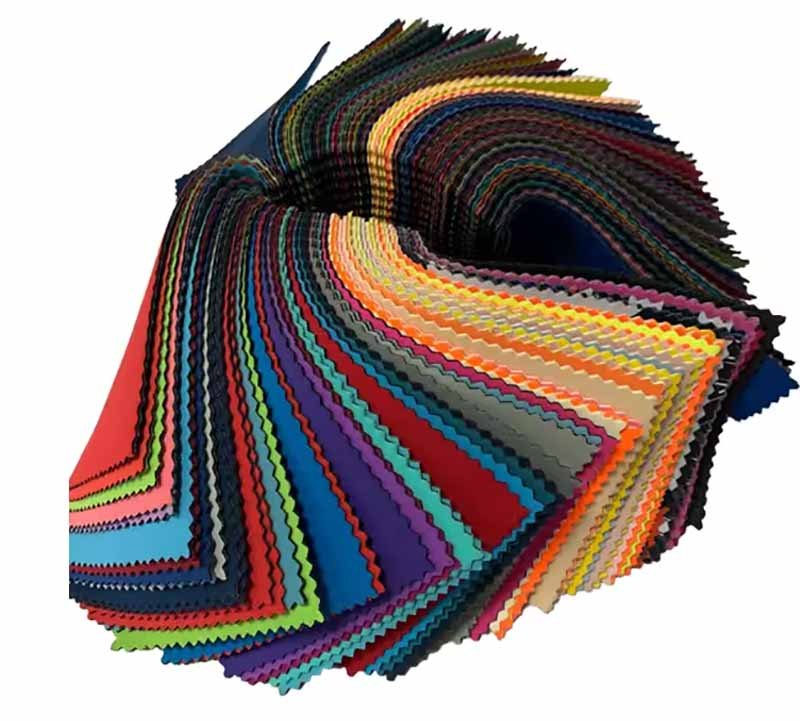
Neoprene is a synthetic rubber foam (CR or SBR) made through a chemical foaming process that creates millions of tiny closed cells. These cells trap air and give neoprene its cushioning, insulation, and buoyancy. After foaming, the sheet is sliced to thickness and laminated with fabrics like polyester or nylon to improve durability and comfort. The structure of these closed cells determines whether the neoprene can breathe—and standard neoprene typically cannot.
Most consumers only see neoprene in the form of a bag, sleeve, wetsuit, or sports accessory. But the internal structure of neoprene is where its performance truly begins—and where breathability ends.
1. The Closed-Cell Foam Architecture
Classic neoprene (used in 90% of consumer products) is closed-cell foam, meaning each microscopic rubber cell is encapsulated. These sealed cells trap air and prevent water and air from flowing through.
Think of it like thousands of tiny balloons pressed together. Air can sit inside them, but nothing can pass between them.
That’s why neoprene:
- Insulates heat
- Repels water
- Floats (used in wetsuits)
- Absorbs shock (ideal for laptop sleeves)
- Creates structure in bags
But this same structure also means:
- No airflow
- No vapor exchange
- Limited moisture evaporation
This is the core scientific reason neoprene is not breathable.
2. CR vs SBR: Does Composition Matter?
Here’s a quick comparison:
| Type | Full Name | Breathability | Durability | Typical Use |
|---|---|---|---|---|
| CR | Chloroprene Rubber | Low (non-breathable) | High | Wetsuits, braces, premium bags |
| SBR | Styrene Butadiene Rubber | Low (non-breathable) | Medium | Koozies, sleeves, low-cost accessories |
| CR/SBR Blend | Mixed Foam | Low | Balanced | General consumer goods |
Regardless of type, none of these are breathable unless perforated.
3. Fabric Lamination: Nylon, Polyester, or Jersey
Most neoprene is laminated on both sides with:
- Nylon jersey
- Polyester jersey
- Lycra
- Spandex
- Mesh knit
Lamination improves comfort but doesn’t add breathability. However, mesh laminations can simulate mild airflow.
4. Thickness Matters More Than People Think
The thicker the neoprene, the less it can ventilate.
| Thickness | Typical Use | Breathability |
|---|---|---|
| 1–2mm | Fashion bags, mask straps | Slightly improved |
| 3–5mm | Laptop sleeves, camera cases | Very low |
| 5–7mm | Sports braces | Very low |
| 7mm+ | Diving wetsuits | Zero |
5. The Manufacturing Reality
During foam expansion, the cells lock into place. If the manufacturer does not perforate the sheet afterward, neoprene will remain entirely non-porous.
This is why standard neoprene simply does not breathe, regardless of what marketing suggests.
Is Neoprene Fabric Breathable or Not?
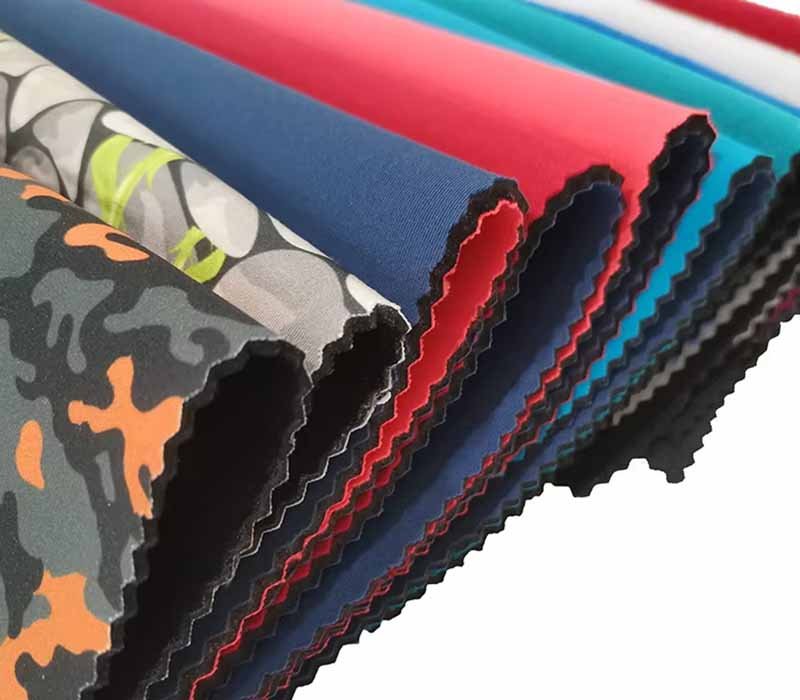
No—standard neoprene is not breathable. Because neoprene is made from closed-cell foam, air cannot pass through it the way it does with woven fabrics. It traps heat and moisture against the body or inside a product. Breathable variants exist, but they require perforation, mesh backing, or specialized engineering. For everyday products like bags, sleeves, and covers, neoprene remains essentially non-breathable.
Many people assume neoprene should be breathable because:
- It feels soft like fabric
- It stretches like activewear
- It’s used in premium fashion bags
- It’s comfortable to the touch
However, breathability requires air permeability, meaning air must pass through the material. Neoprene does not allow air to pass because its internal structure is sealed.
1. Why Breathability Is Not Part of Neoprene’s Design
Neoprene was originally created for:
- Water insulation
- Thermal protection
- Chemical resistance
- Shock absorption
These functions inherently require airtight and water-tight properties.
A breathable neoprene would contradict its original purpose.
2. Why People Mistake Softness for Breathability
Consumers often confuse:
- Softness
- Flexibility
- Cushioning
…with breathability. Neoprene scores high in all three, so it “feels” breathable—until moisture builds up.
3. Breathability Depends on Modifications, Not Base Material
Only modified neoprene can breathe:
- Perforated neoprene
- Mesh-laminated neoprene
- Spacer neoprene
- Ultra-thin neoprene (<1mm)
These are engineered to replicate airflow—not naturally occurring.
4. Heat and Moisture Accumulation Is Normal
For items like:
- Sports supports
- Knee/elbow braces
- Laptop sleeves
- Car seat covers
- Pet vests
- Shapewear
Heat retention is expected and often intentional.
For example:
- A wetsuit must trap heat to prevent hypothermia.
- A knee brace must keep joints warm to increase blood flow.
Breathability would reduce these benefits.
5. When Breathability Matters
For lifestyle products such as:
- Bags
- Baby carriers
- Wearables
- Backpacks
- Fashion items
Breathability may matter for comfort. This is where perforated or mesh neoprene becomes valuable.
How Does Neoprene Manage Heat, Sweat, and Moisture?
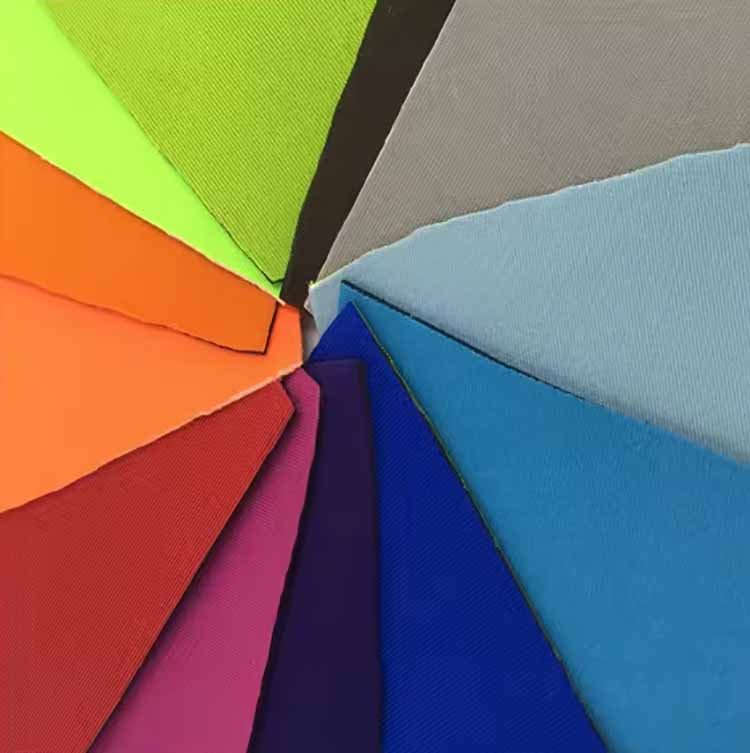
Neoprene does not release heat or sweat; instead, it traps both due to its closed-cell structure. Heat stays inside the foam, and moisture accumulates on the skin or product surface. However, laminated fabrics, perforations, and mesh layers can improve comfort by allowing limited evaporation. Neoprene manages moisture primarily through insulation—not ventilation.
Understanding neoprene’s relationship with heat and moisture is essential when selecting materials.
1. Heat Retention: A Feature, Not a Flaw
Neoprene traps heat because:
- The air inside closed cells acts like a thermal blanket.
- Rubber naturally resists temperature transfer.
- Lamination layers reduce surface heat loss.
This is why neoprene is favored for:
- Wetsuits
- Thermo belts
- Sports braces
- Joint warmers
- Surf gear
These applications rely on warmth to enhance performance or safety.
2. Why Sweat Builds Up
Sweat has nowhere to escape.
In a gym or sports context, this is normal and sometimes beneficial because:
- Warm joints move better.
- Warm muscles are less prone to injury.
But for daily wear or fashion, moisture trapping can reduce comfort.
3. Moisture Behavior Inside Neoprene Bags
Inside a neoprene bag:
- Moisture cannot escape outward.
- The bag retains internal temperature.
- Condensation can form in warm environments.
This is great for thermal lunch bags but less ideal for wet gym clothes.
4. Moisture-Wicking Fabrics Improve Comfort
Manufacturers sometimes add:
- Polyester jersey
- Nylon tricot
- Lycra blend fabrics
These layers wick moisture away from skin or product surfaces but still cannot push it through the neoprene foam.
5. Why Some People Feel “Overheated” in Neoprene
This depends on:
- Product thickness
- Duration of use
- Ambient temperature
- Body heat
- Activity level
Thicker foams (5–7mm) significantly increase warmth.
6. Improving Breathability Through Engineering
Here are the modifications that help reduce heat buildup:
| Solution | Effect on Heat | Effect on Moisture |
|---|---|---|
| Perforation | Mild airflow | Moderate improvement |
| Mesh lamination | Air circulation | Mild improvement |
| Ultra-thin neoprene | Faster heat release | Slight improvement |
| Spacer fabric hybrid | Excellent airflow | Strong improvement |
Which Types of Neoprene Are More Breathable Than Others?
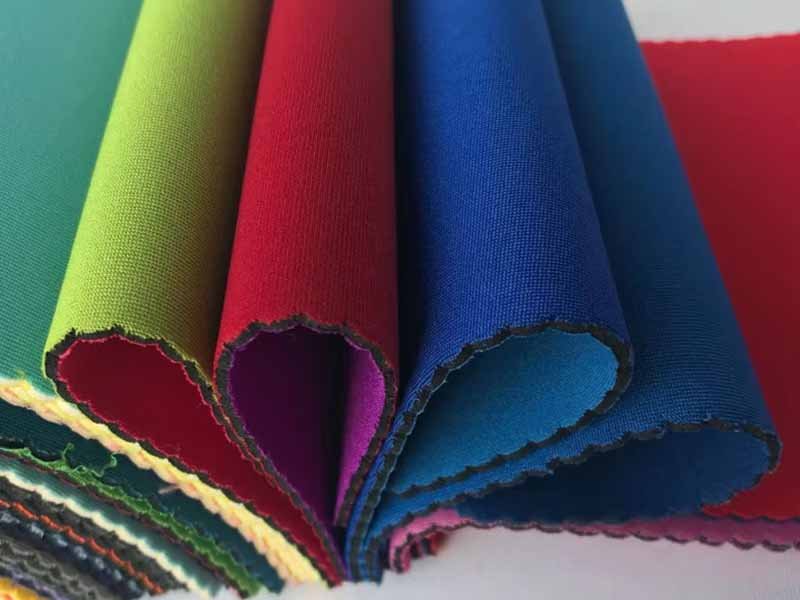
The most breathable neoprene types are perforated neoprene, mesh neoprene, and ultra-thin neoprene. These versions allow limited airflow through small holes, mesh structures, or reduced thickness. Standard closed-cell neoprene remains non-breathable, but engineered variants significantly improve ventilation for sports, bags, and apparel applications.
Not all neoprene is created equal. Let’s break down which versions offer the best airflow.
1. Standard Closed-Cell Neoprene (Non-Breathable)
This is the most common form used in:
- Laptop sleeves
- Wetsuits
- Sports braces
- Bags
It retains heat and traps moisture.
2. Perforated Neoprene (Improved Breathability)
This foam is mechanically punched with tiny holes (0.5–2.5mm).
Benefits:
- Allows mild airflow
- Reduces sweating
- Enhances comfort
- Preferred for medical braces and sportswear
Trade-offs:
- Lower insulation
- Slightly weaker structure
3. Mesh Neoprene (Best Air Circulation)
Mesh neoprene is laminated with:
- Power mesh
- Air mesh
- Spacer knit
This creates channels for airflow.
Applications:
- Sports bras
- Backpacks
- Shoulder straps
- Cushioned inserts
4. Ultra-Thin Neoprene (<1mm)
Used in:
- Fashion apparel
- Modern handbags
- Wearable accessories
Allows some temperature release through thinness alone.
5. Open-Cell Neoprene (Rare in Consumer Products)
Used mostly in high-end diving gear.
Open-cell neoprene:
- Clings to skin
- Traps heat quickly
- Absorbs water rather than repelling it
- Does NOT allow airflow despite being “open cell”
It is a misnomer in terms of breathability.
6. Neoprene Blends
Manufacturers sometimes blend:
- PU foam
- EVA foam
- Rubber sponge
- Spacer fabric
These can create a semi-breathable hybrid.
Do Neoprene Products Cause Overheating or Skin Discomfort?
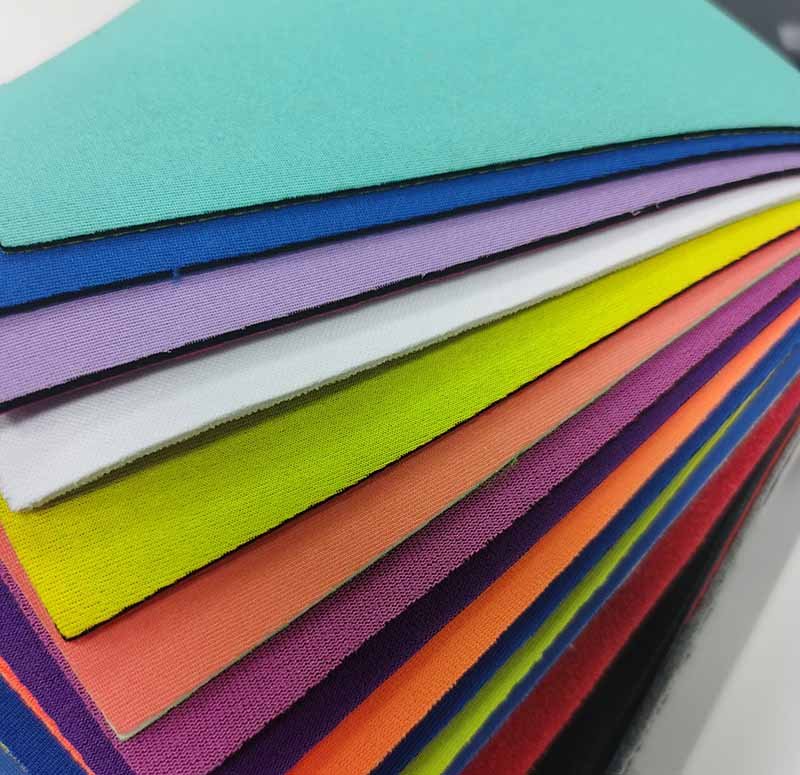
Neoprene can cause overheating or skin discomfort during extended wear because it traps heat and moisture. Sweat accumulation may lead to irritation for sensitive skin. However, this typically occurs in high-activity or warm environments. Using thinner neoprene, perforated versions, or moisture-wicking linings can significantly improve comfort.
Here’s what you need to know.
1. Overheating Depends on Use Case
Neoprene is designed to insulate. So overheating is most common in:
- Hot climates
- Long-term wear
- High-intensity workouts
- Medical braces
- Thick neoprene (5–7mm)
2. Sweat Accumulation and Skin Irritation
When moisture cannot escape:
- Skin may soften
- Friction may increase
- Mild irritation can occur
This is rare for bags and accessories but more common for wearable neoprene.
3. Most Users Experience No Issues
Based on our manufacturing data (18+ years):
- < 3% of customers report discomfort
- 70% of complaints come from 5–7mm medical neoprene
- Very few issues occur with 1–3mm accessories
4. Hypoallergenic Laminations Reduce Skin Reactions
Using:
- Nylon jersey
- Lycra
- Smooth knit polyester
…creates a barrier between skin and rubber.
5. Perforated or thin neoprene reduces overheating
Because:
- Air moves more freely
- Less foam means less insulation
Most “breathable neoprene” claims refer to fabric engineering, not foam structure.
How Does Neoprene Compare With Other Materials in Breathability?
Neoprene is significantly less breathable than cotton, polyester, mesh, and spandex because of its closed-cell foam structure. It performs better in insulation, cushioning, and water resistance but worse in airflow and moisture evaporation. Breathability improves only when neoprene is perforated or combined with mesh or spacer fabrics.
1. Breathability Comparison Chart
| Material | Breathability | Comfort | Water Resistance | Insulation | Best Use |
|---|---|---|---|---|---|
| Neoprene | Very Low | Good | Excellent | Very High | Bags, Wetsuits |
| Cotton | High | Excellent | Low | Low | Clothing |
| Polyester | Medium | Good | Medium | Low | Apparel, liners |
| Mesh Knit | Very High | Great | Low | Low | Sportswear |
| Spacer Fabric | High | Great | Moderate | Low | Cushions |
| EVA Foam | Low | Fair | Excellent | Medium | Padding |
| PU Foam | Low | Good | Low | Low | Fashion bags |
2. Why Neoprene Is Uniquely Non-Breathable
Because:
- Foam cells are sealed
- Rubber itself is impermeable
3. Where Neoprene Performs Better
Neoprene excels in:
- Impact absorption
- Stretch
- Structure
- Water resistance
- Thermal control
This is why it dominates categories like:
- Laptop sleeves
- Camera bags
- Wetsuits
- Sports braces
- Bottle coolers
4. When Neoprene Is Not Ideal
Avoid neoprene if you need:
- Ventilation
- Quick drying
- Long-term body contact in hot weather
Are Breathable Neoprene Alternatives Available for Bags, Sports Gear, and Fashion?
Yes. Breathable alternatives include spacer neoprene, mesh-laminated neoprene, perforated neoprene, and neoprene-like foams such as TPE, NBR, EVA, and PU blends. These materials offer similar cushioning but allow better airflow and moisture release, making them ideal for sports gear, wearable products, and lightweight bags.
1. Spacer Neoprene (Best High-Performance Alternative)
- Channels air through its 3D knit
- Lightweight
- Soft
- Fast drying
- Ideal for straps, gym bags, fashion bags
2. Mesh-Laminated Neoprene
Perfect balance of structure + airflow.
3. EVA + Fabric Laminates
Used in:
- Travel bags
- Cosmetic cases
- Outdoor gear
Offers:
- Cushioning
- Shape retention
- Moderate airflow
4. TPE Foam Composites
Eco-friendly, flexible, and lighter than neoprene.
5. “Neoprene Look” Fabrics
These polyester-spandex blends mimic neoprene’s aesthetic with better ventilation.
How Do You Choose the Right Neoprene for Your Product Application?
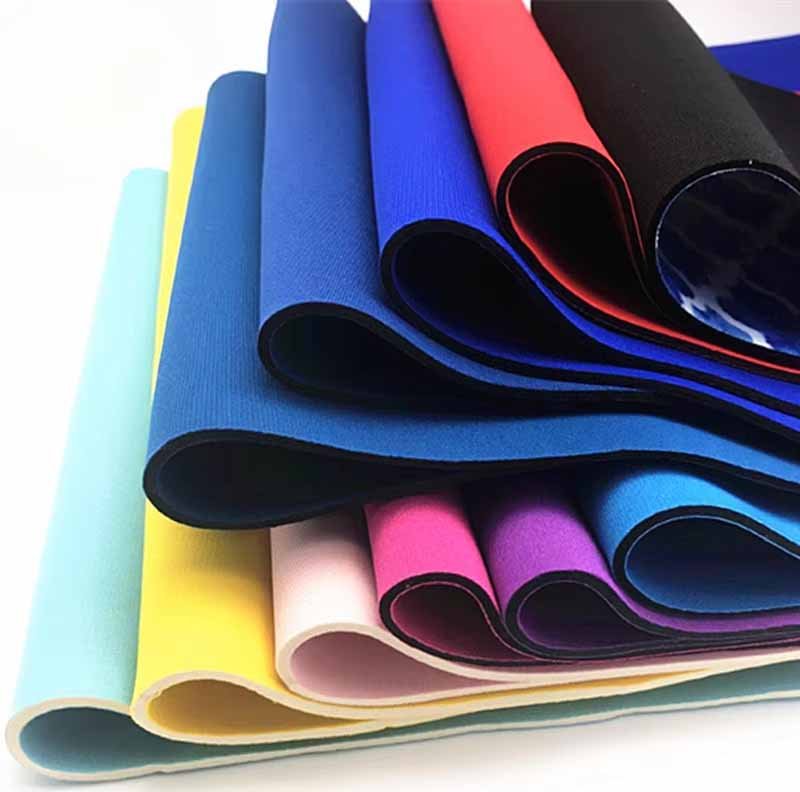
Choose neoprene based on thickness, foam type, lamination, and whether the product requires insulation or breathability. For bags and sleeves, 2–4mm closed-cell neoprene works best. For sports gear, perforated or mesh neoprene can reduce heat buildup. For fashion items, ultra-thin neoprene offers flexibility and comfort.
A few rules simplify neoprene selection:
1. For Bags & Sleeves
Recommended: 3–4mm closed-cell CR/SBR blend
Why:
- Shock absorption
- Structure
- Water resistance
2. For Fitness Gear
Use perforated neoprene
Why:
- Sweat reduction
- Comfort
3. For Fashion Apparel
Choose 1–2mm ultra-thin neoprene.
4. For Medical Braces
Use 5–7mm perforated CR neoprene
Why:
- Strong insulation
- Moderate breathability
5. For Premium Accessories
Use CR neoprene only.
Conclusion — Should You Use Neoprene for Your Next Project?
Neoprene isn’t breathable by nature—but it’s incredibly versatile. With the right engineering, you can achieve the perfect balance between comfort, structure, and airflow.
If you want to design:
- High-quality neoprene bags
- Neoprene koozies
- Wetsuits
- Braces
- Laptop sleeves
- Covers
- Fashion accessories
Then neoprene-bag.com is your best partner.
With 18+ years of expertise, low MOQ customization, free design, fast sampling, and 100% quality control, we help global brands turn ideas into real neoprene products.
Ready to develop your custom neoprene product? Contact our team at neoprene-bag.com—we’ll help you build it right from the first sample.










